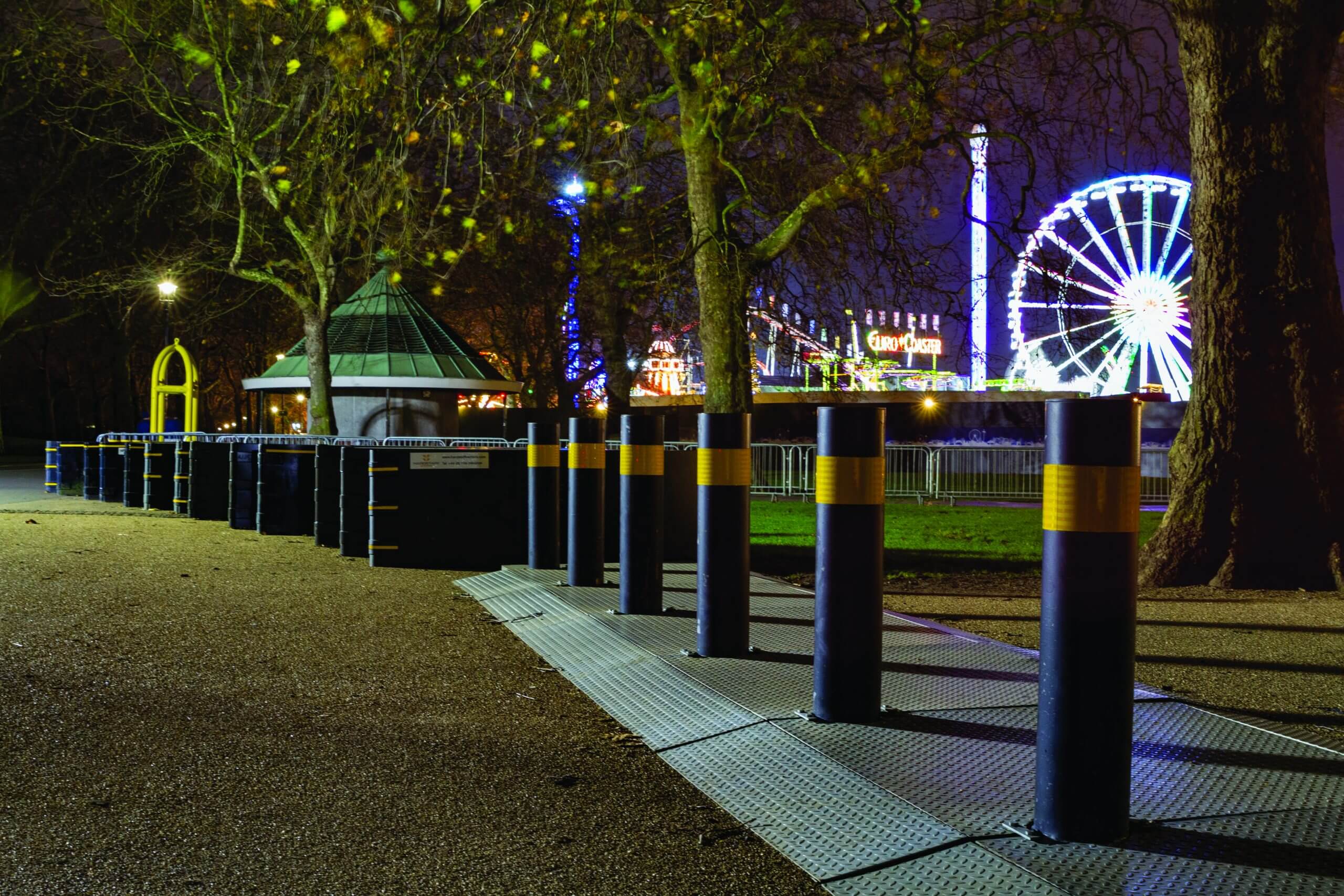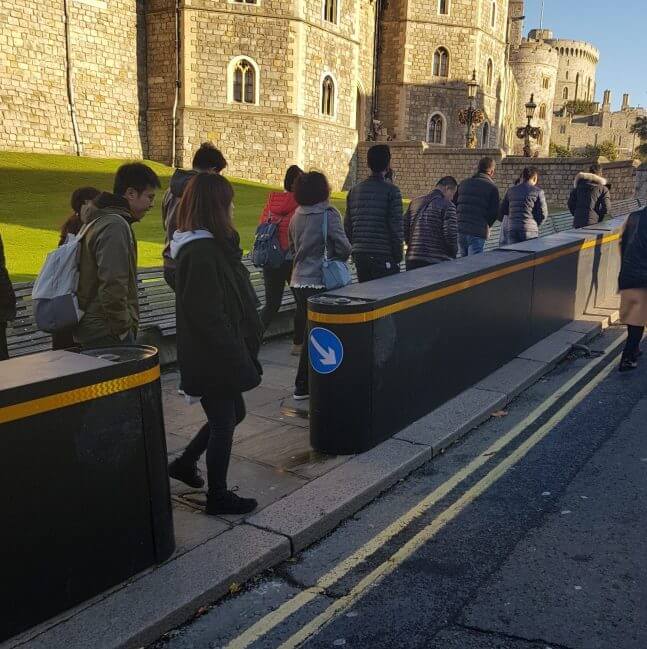In recent years, temporary security measures have become more prevalent in response to the changing nature of security threats. The Vehicle as a Weapon (VAAW) technique has emerged, with attacks developing from the deployment of Vehicle-Borne Improvised Explosive Devices (VBIEDs) to target people directly with moving vehicles.
Crowds of people, by their nature, are not static. Events which attract large crowds – such as festivals, Christmas markets, parades, sporting events and even protests – are more often than not, temporary. This means that security measures must be as robust and effective as they are flexible. Built to suit the area where an event is taking place and the behaviour of those visiting.
Temporary security typically takes the form of surface mounted barriers. These can either be pedestrian permeable or not. Usually, within a temporary security scheme, both pedestrians and emergency vehicles require access.
Temporary security solutions do not mean a compromise on strength. All Hardstaff temporary barriers are tested and certified to third-party accreditations, just like their permanent counterparts.

As the public become more aware of terrorism threats, they will start to look for venues that are taking their safety and security seriously.
TEMPORARY SECURITY
Where does responsibility start and end when it comes to protecting temporary events?

You cannot recognise a risk and ignore it, the Health and Safety at Work Act (1974) requires, ‘employers and the self-employed to protect people other than those at work e.g. volunteer staff and spectators. These people should be protected from risks to their health and safety arising out of, or in connection with, an employer’s work activities’.
The Management of Health and Safety at Work Regulations (1999) require organisations to assess and control risks to protect employees and others who may be affected by their work activity. Ensure adequate training, information and equipment are provided to all staff, and especially to those involved directly on the safety and security side. They must put proper procedures and competent staff in place to deal with imminent and serious danger and response to terrorist incidents.
The Civil Contingencies Act (2004) places a legal obligation on the emergency services to plan and exercise for emergency scenarios as well as manage business continuity.
We have seen a change in recent years where, football club safety officers became safety and security officers and the responsibility for protecting their attendees in the final mile and concourse of their venues became theirs. This has seen change for the fans attending stadiums who now see security between the ground and the transport hubs, and they feel reassured that their safety is taken seriously.
Historically event venues have had to place a lot of thought around protecting their income from unauthorised attendees. The knock on effect of this is the potential to create a crowded space outside the venue with people waiting for ticket checks and to be searched. This crowded space must be considered by the venue and protection provided, it wouldn’t be crowded if it wasn’t for the event.
It is possible to make security measures attractive and even blend in to the surrounding environment.
Are there any laws in place to enforce the security at events?

Historically there hasn’t been. Looking forward, Martyn’s law is a new legislation which will look to require spaces and places to which the public have access to do certain things to take responsibility for safety and security. These include; undertaking freely available counter-terrorism advice and training; conducting vulnerability assessment of their operating spaces and places; mitigate the risks identified from that vulnerability assessment; plan for counter terrorism; and require local authorities to plan for the threat of terrorism.
This law has been the result of campaigning for change by Figen Murray, mother of Martyn Hett who tragically died in the Manchester Arena bombing in 2017. Measures being put into place for security must be proportionate and reasonable, considering the threat profile of the event location or venue.
The paying public will start to look for venues that are taking their safety and security seriously before attending events.
There can be quite a delay between the recognition of risk by a client or site and the implementation of security measures; is there a way to manage this?

We refer to this as ‘minding the gap’. A client must consider the threat and risk, including a vulnerability assessment for their asset and conclude what residual risk is left which requires management. This applies to both permanent security requirements for a fixed asset and those required for a temporary crowded space event
Once the residual risk has been identified for a site or an event, it is then difficult to leave the asset unprotected. The timescale to implement permanent measures may be sometimes up to 2 years while vehicle dynamic assessments are conducted, tender processes are concluded and stakeholders groups go through the necessary motions.
There are short term measures which can be implemented to protect an area, or asset temporarily, while a permanent solution is being designed or found. Sometimes temporary security measures may even help to inform the permanent security design as the temporary installation will often highlight what is operationally possibly to achieve and in some cases, what wouldn’t work permanently.











